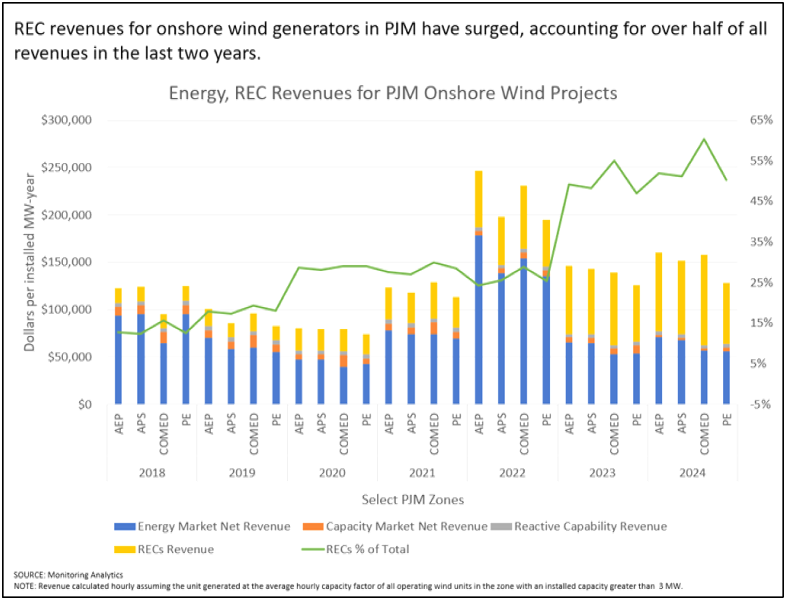PJM Wind Farms Now Earning More from RECs than Power
Wind farms across the PJM grid are reaping a financial boost from soaring REC revenue, with the credits making up as much as 60% of total income over the last couple years, a figure that is more than double the historic norm.
Revenue from RECs across four major zones has averaged about $75,000 per MW-year in 2023 and 2024, according to data from Monitoring Analytics, the independent monitor for the PJM market. This is up from the $29,000 per MW-year average over the prior five years. It also makes RECs the top source of funds for PJM wind farms, well ahead of energy market income which has averaged $61,000 per MW-year. The analysis considers wind farms in the American Electric Power (AEP), Allegheny Power System (APS), ComEd, and PE zones.
This financial windfall is underpinned by a combination of regulatory and market forces. On the demand side, REC prices are being driven higher by increasingly ambitious state RPS targets. While these targets rise gradually, the explosive power demand from a growing concentration of data centers is further accelerating the need for RECs, pressuring prices further. Meanwhile, supply is being constrained as grid connection bottlenecks slow the pace of new energy development, tightening the market.
The rise in RECs has been a leading factor in the appreciation of wind PPAs in PJM. From Virginia’s Dominion Zone, where RECs are valued at $30/MWh, to the Eastern Hub, where they are valued at $26/MWh, the credits account for over one-quarter of the value of a wind PPA, according to Pexapark data.
The growing impact of RECs has become so significant that it has prompted calls for major market reforms from PJM’s independent monitor. Citing RECs as “an increasingly important component of the wholesale energy market,” Monitoring Analytics said that it “recommends that there be a single PJM operated forward market for RECs.”
Once a secondary factor to other income sources, RECs have become a central component in the economics of wind farms. This surge in REC revenue is diversifying income and provides a more stable financial foundation for wind assets. For developers, this could provide a partial offset to the looming expiration of federal tax subsidies.











